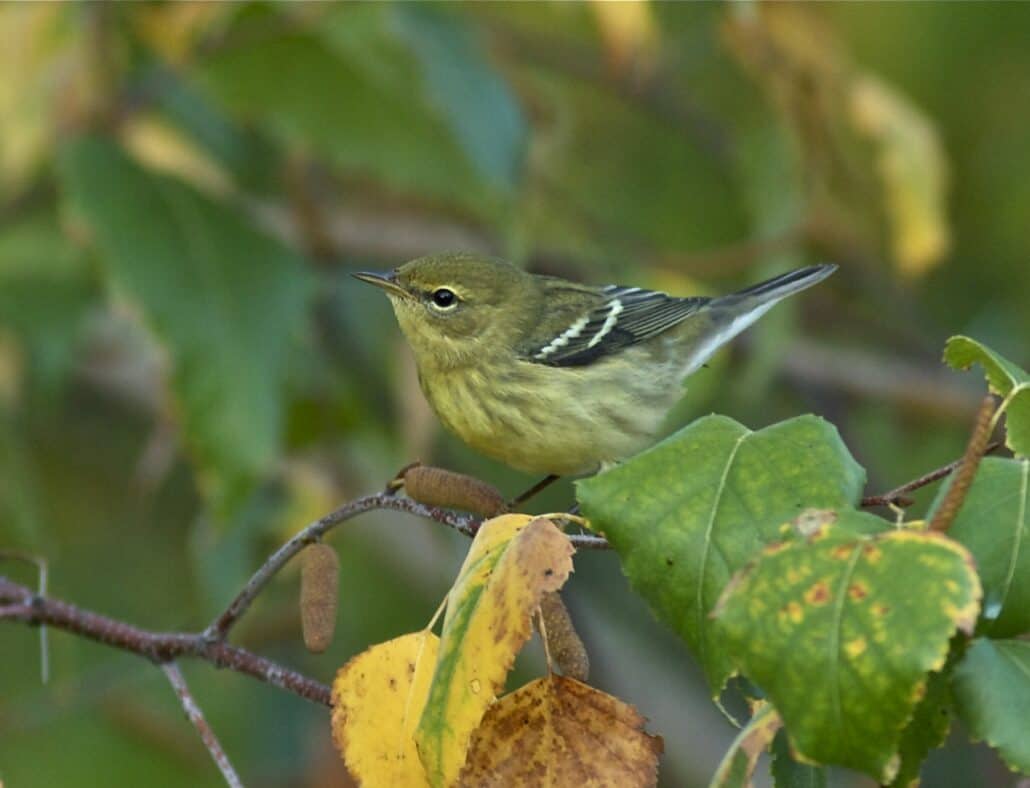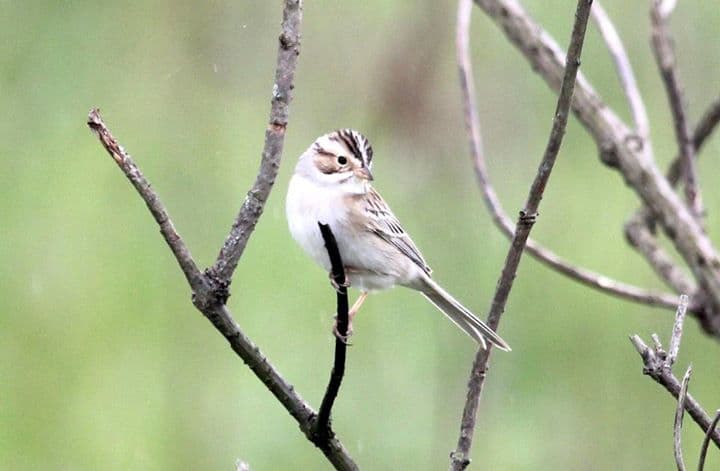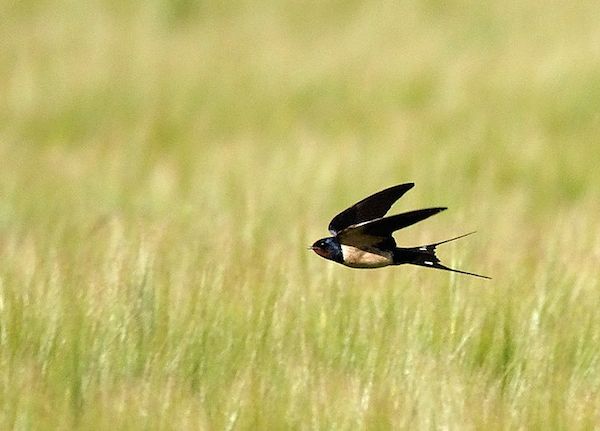The blackpoll warbler is a small bird best known for its ability to travel expansive distances. The breeding male is primarily black and white with sharp lines and markings. It has a deep, prominent black cap with white cheeks and wing bars. Its back is brown with dark streaks and its belly is white with a spattering of short, black streaks. The breeding female is a pale version of the males with more monochromatic tones of gray on its face and crown. Both sexes have legs that are a bright pinkish orange.
Listen For
The blackpoll warbler’s song is so sharp and high-pitched at 1,000 Hz to 10,000 Hz that it is sometimes near inaudible. It sings a short, rapid series of staccato notes that rapidly crescendo and decrescendo: seet-seet-seet-SEET-SEET-seet-seet-seet.
Find It
During breeding season, blackpoll warblers occupy the northern parts of North America in New England, Canada and Alaska. In these areas they prefer to inhabit thickets of spruce, alder, and willow, or wet evergreen trees. During migration many fly intensive trips down the northeastern United States, through Florida, and onto northern South America.
If they decide to stop over in the States, they prefer shrubs and deciduous trees. Some have additional layovers in Bermuda or the Antilles, while others famously make the entire trip by flying nonstop for three days. During the winter, they prefer to live in forest edges and second-growth forests in areas east of the Andes Mountains.
Feeding Behavior
Blackpoll warblers mainly eat a variety of different insects. During breeding season they eat caterpillars, flies, spiders, wasps, ants, and beetles among others. They forage along the top branches of evergreen and deciduous trees, gleaning insects from the bark and leaves. They will also fly out to catch insects midair. During migration they also eat some seeds and fruit such as pokeberries.
Nesting Behavior
Blackpoll warblers prefer to build their nests in the understory of spruce or fir on a branch next to the trunk anywhere from 2-12 feet off the ground. The female builds the open cup shaped nest by using twigs, bark, plant fibers, weeds, and moss. She lines the bulky nest with fine feathers, hair, and grass. The female lays 4-5 eggs that are off-white with brown or purplish spots. The male feeds the female as she incubates the nest for 12 days. Both parents feed the young before they are ready to leave the nest after 11-12 days.




